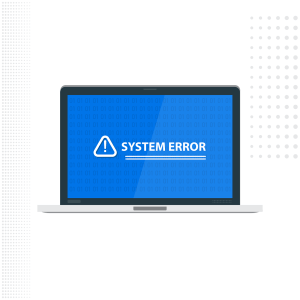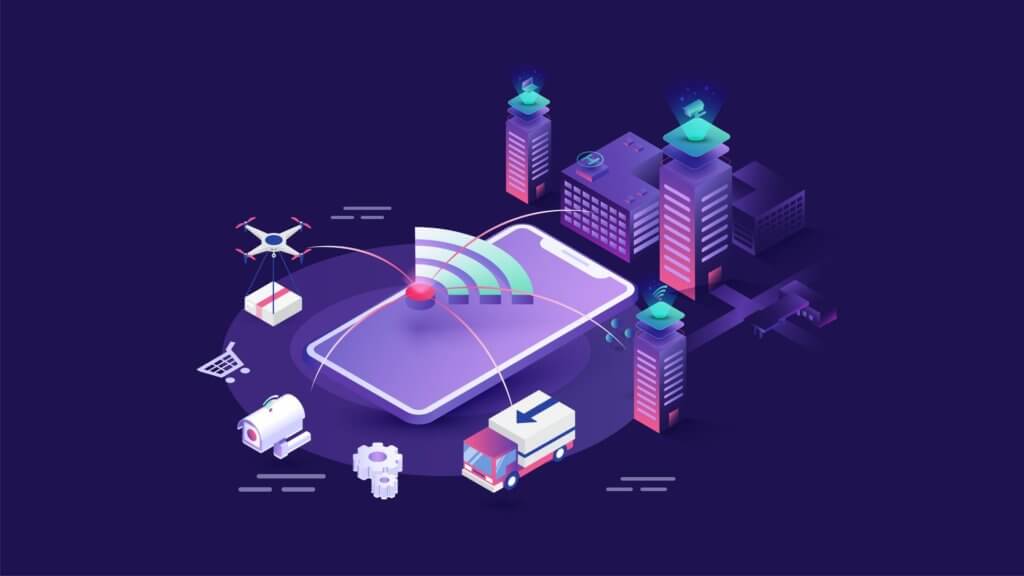Handling High User Mobile App Volume: Scalable Backend Solutions
March 3, 2025 - 33 minutes readAfter reading the article, you’ll:
- Understand four cornerstone strategies for scalable backend architecture—cloud infrastructure, microservices, serverless computing, and database optimization—and how they work together to support applications under high user loads.
- Learn how these technical approaches translate to tangible business benefits including cost efficiency (through pay-as-you-go models), improved development speed, and the ability to handle unpredictable growth without service disruptions.
- Gain insights into real-world implementation examples from companies like Netflix, Coca-Cola, and Facebook that demonstrate how these scalability strategies can be applied to meet different business needs and traffic patterns.

Handling rapid user growth is a great problem for a business to have – unless your backend systems can’t keep up. Surges in users or activity can strain an application’s infrastructure, leading to slow performance or crashes. The consequences of an overloaded backend are more than technical issues; they’re business issues. Even minor outages or latency can frustrate customers and drive them to competitors.
In fact, Gartner estimates the average cost of IT downtime at $5,600 per minute, illustrating how costly an unstable app can be. To scale efficiently, companies need backend solutions that ensure responsiveness and reliability as user demand grows. This article explores four cornerstone strategies – cloud scalability, microservices, serverless computing, and database optimization – and how they empower businesses to handle high volumes while keeping users happy and the bottom line healthy.
Embracing Cloud Scalability
One of the most foundational steps in scaling an app is moving to the cloud. Cloud platforms like Amazon Web Services (AWS), Microsoft Azure, and Google Cloud offer virtually limitless resources that can be adjusted on-demand. This elasticity means you can add more servers or increase computing power in minutes to handle a traffic spike, then scale back down to save costs during lulls.
The flexibility of cloud infrastructure is a game-changer for businesses. Instead of investing in expensive hardware that might sit idle, companies can leverage pay-as-you-go models – essentially renting compute power as needed. It’s no surprise that over 90% of companies worldwide now use cloud computing in their operations. Cloud adoption has become mainstream because it aligns IT capacity with real-time business needs.
From a business perspective, cloud scalability translates to agility and cost efficiency. You’re not paying for oversized servers “just in case” traffic grows – you scale out only when the users show up. For example, during the COVID-19 pandemic, Zoom saw usage explode 30× (from 10 million to 300 million daily meeting participants) in a matter of months. They managed this unprecedented growth by quickly provisioning resources across cloud providers, ensuring calls didn’t drop despite the massive surge. T
his kind of responsiveness simply isn’t feasible with fixed on-premises servers. Moreover, modern cloud services come with built-in tools like auto-scaling groups and load balancers that automatically distribute traffic and add or remove capacity based on demand. As Dogtown Media’s engineering team highlights, the cloud provides “flexible and automated scaling of compute, storage, and networks to handle demand spikes,” and managed services like load balancing greatly aid resilience.
Cost optimization is another major benefit. A study by Accenture found companies can reduce total cost of ownership by up to 40% by migrating to public cloud infrastructure. Instead of heavy upfront investments and ongoing maintenance of data centers, businesses can turn infrastructure into a variable expense. This is especially helpful for startups and growing firms – you only pay for the resources you actually need at the moment.
Additionally, cloud providers’ global data centers make it easier to improve performance for users around the world by running your app closer to where the users are. In sum, embracing cloud scalability empowers a business to handle high user volumes with greater agility and often lower costs, all while reducing the risk of downtime due to capacity shortfalls.
Microservices Architecture for Modular Scaling
As applications and user bases grow, the architecture of the software itself needs to evolve to avoid becoming a bottleneck. This is where microservices come in. A microservices architecture breaks what used to be a single, monolithic application into a collection of smaller, independent services. Each service is focused on a specific business capability (for example, user authentication, payment processing, or notification delivery) and communicates with others through APIs. This modular design has profound implications for scalability and business agility.
Scalability
With microservices, each component of your application can be scaled independently. If one feature – say, the search function on an e-commerce app – experiences a heavy load, you can allocate more instances or resources to the search microservice alone, without needlessly scaling the entire app. This granular scaling ensures efficient use of resources and maintains performance where it’s needed most.
 Contrast this with a monolithic architecture, where even a small hotspot in the system (like that busy search feature) might force you to scale up the whole application stack, potentially increasing costs and complexity. Microservices contain problems to their own domain; a surge in one service won’t necessarily drag down others, and a failure in one component is less likely to cascade system-wide.
Contrast this with a monolithic architecture, where even a small hotspot in the system (like that busy search feature) might force you to scale up the whole application stack, potentially increasing costs and complexity. Microservices contain problems to their own domain; a surge in one service won’t necessarily drag down others, and a failure in one component is less likely to cascade system-wide.
Agility and Faster Development
From a business standpoint, microservices allow different teams to develop, deploy, and update services in parallel. Development is faster because teams can work autonomously on their service without waiting for a massive, coordinated deployment of a monolith. New features and updates roll out continuously, improving time-to-market. It’s not just theory – surveys show organizations adopting microservices report significant improvements in deployment speed and product iteration.
For instance, in one IBM Market Development & Insights study, companies saw 29% faster time-to-market, 28% improved application performance, and even a 30% increase in customer retention after implementing microservices. These are real business metrics (customer retention, security, staff productivity) being boosted, not just technical nice-to-haves.
Widespread Adoption and Success Stories
Microservices have been embraced by a majority of engineering organizations – a recent Gartner report found about 74% of respondents were using microservices architecture in 2023. Many tech giants attribute their ability to scale and innovate to microservices. Netflix, for example, famously migrated from a monolithic architecture to microservices in the early 2010s after a major database failure in 2008 crippled their DVD rental service for three days.
The result? By 2013, Netflix’s cloud-based microservices architecture was handling 2 billion API requests per day, delivered by over 500 microservices. A few years later, they grew to 700+ microservices, enabling the streaming of roughly 6 billion hours of content weekly to over 220 million subscribers worldwide.
This modular approach not only handled Netflix’s hyper-growth, but also improved reliability and helped reduce costs – Netflix reported that “cloud costs per streaming start” became a fraction of what they were in their old data center, a welcome side benefit of the move to microservices in the cloud.
Design for Failure and Independent Deployment
Another business advantage is resilience. In a microservices architecture, if one service fails (for example, the recommendation engine has a bug), it can be isolated and fixed without bringing down the entire application. This containment of failures means higher overall uptime for the user. Dogtown Media’s own engineering guide on robust architecture notes that breaking a system into microservices “restricts failure domains and facilitates granular scaling” – exactly the kind of robust design that prevents small issues from snowballing into major outages.
Companies like Amazon pioneered this approach with their “two-pizza team” structure, allowing individual services to be built and run by small teams. The net effect is faster innovation: teams can choose the best tool or language for their service, experiment, and deploy independently. For businesses, that means the capability to respond quicker to market changes or customer needs with new features and updates.
Moving to microservices isn’t without challenges – it introduces complexity in managing many moving parts, and requires strong DevOps practices, monitoring, and communication between services. However, when done right, the payoff is a backend that can grow and evolve in step with the business.
Companies planning for long-term high user volumes should consider microservices as a way to future-proof their architecture, enabling scaling in a controlled, cost-efficient manner while also accelerating development and deployment cycles.
Leveraging Serverless Computing for Elastic Demand
 If microservices take infrastructure granularity to one level, serverless computing takes it even further – down to individual functions and events. Serverless architectures allow companies to run application code without managing any servers themselves.
If microservices take infrastructure granularity to one level, serverless computing takes it even further – down to individual functions and events. Serverless architectures allow companies to run application code without managing any servers themselves.
Services like AWS Lambda, Google Cloud Functions, and Azure Functions automatically execute your code in response to events (like an HTTP request or a database update) and scale the execution environment transparently. The cloud provider handles all the provisioning behind the scenes, spinning up containers to run the code only when needed and shutting them down when done. For businesses facing erratic or spiky usage patterns, serverless can be a powerful ally.
As of Q2 2023, around 70% of organizations running on AWS and 60% on Google Cloud are using one or more serverless solutions, with adoption on Azure climbing toward 50%. This trend, captured in Datadog’s 2023 State of Serverless report, shows how serverless computing has quickly moved from a niche approach to a mainstream strategy for handling scalable workloads.
The appeal of serverless is clear: automatic, effortless scaling and cost alignment with usage. If your mobile app suddenly gets a burst of 100,000 new users overnight, a serverless backend can seamlessly absorb that load. Functions will execute in parallel as needed, and you won’t wake an engineer at 2 AM to add more servers – the platform does it for you. When traffic falls back down, you aren’t left with idle servers; you simply stop paying for the resources.
This elasticity is extremely cost-effective. Many businesses use serverless to handle unpredictable events or infrequent tasks for this very reason. For example, an e-commerce site might use serverless functions to generate on-the-fly image thumbnails or run analytics on user behavior. These tasks don’t run constantly, so it’s ideal to only incur cost when they do run.
Developer productivity is another big win. With serverless, developers can focus on writing the business logic for a feature, without worrying about provisioning or managing the underlying machines. This often speeds up development and iteration. Michael Connor, who led Coca-Cola’s cloud strategy, pointed out that traditionally “developers need to know devops in order to build enterprise applications,” but with approaches like serverless, much of that operational burden is lifted.
In essence, serverless frees your development team to concentrate on delivering value (new features, bug fixes, improvements) rather than tuning servers and infrastructure. Faster development cycles mean faster time to market for business initiatives.
Real-world success stories underscore these benefits. Coca-Cola’s North America division rearchitected an application (for their smart vending machines) to a serverless model and saw immediate rewards. They were able to reduce their annual infrastructure cost from about $13k to $4.5k by eliminating always-on server instance.
That’s roughly a 65% cost reduction for that system. Moreover, serverless worked so well for them that Coca-Cola made it a guideline that new internal projects should consider a serverless approach first. This kind of mandate shows strong confidence in the model – they found it improved scalability and lowered costs enough that it became the default architecture choice for future apps.
Another example is an anecdote from the hospitality industry: a major home-rental platform shifted parts of their backend to serverless to handle peak traffic during holidays. They managed to process millions of operations during New Year’s Eve with minimal infrastructure worries, then automatically spun down, saving on cloud bills in the quiet weeks after. Cases like this illustrate why experts are excited about serverless. Guillermo Rauch, CEO of Vercel (a platform for next-gen web applications), stated that “Serverless has demonstrated that it is the operational model of the future.” His company saw a 125% growth in serverless function invocations over a year, fueled by modern web frameworks embracing serverless deployments.
From a technical view, serverless computing can be seen as an extension of the microservices idea – often, each function does one small task. It pairs well with event-driven designs and microservices architectures, where you might have some long-running services complemented by many small serverless functions. Businesses evaluating serverless should consider their workload patterns: if you have highly variable or event-driven loads, serverless can drastically optimize resource usage and costs.
It’s also a great way to experiment with new features without committing to permanent infrastructure. That said, it’s important to monitor costs and performance (cold start times, for instance, can introduce slight delays for infrequently used functions). In practice, many companies adopt a hybrid approach: core services might run on traditional servers or containers (for steady workloads), while auxiliary or spiky workloads run serverlessly. The key takeaway is that serverless computing provides another level of freedom to scale quickly and efficiently, mapping infrastructure costs directly to business activity.
Database Optimization and Performance at Scale
When we talk about scalable backends, we must talk about databases – the system of record behind any application. The best code architecture or infinite cloud servers won’t help if your database can’t handle the load. Often, the database is the bottleneck when user volumes soar, because every user action eventually hits a database query, whether it’s logging in, loading a feed, or making a purchase. Therefore, optimizing and scaling the database is critical for high-volume apps.
Vertical vs. Horizontal Scaling
There are two basic ways to scale a database: vertical scaling (making the database server itself more powerful by adding CPU, memory, or faster storage) and horizontal scaling (adding more database servers to share the load). Vertical scaling is the path of least resistance – many teams start by moving to a bigger database instance when they hit performance limits. But there are physical and cost limits to scaling up (and a bigger server can’t help once you saturate it). That’s when horizontal scaling becomes essential. However, spreading data across multiple servers (sharding) or adding replicas introduces complexity: you have to decide how to split the data and ensure all copies stay consistent.
Caching and Replication
For read-heavy workloads, one relatively straightforward scaling technique is to use read replicas. These are copies of your database that handle read-only queries, taking pressure off the primary database that handles writes. Many relational databases like MySQL or PostgreSQL support replication out of the box. Alongside replication, caching is a lifesaver. By storing frequently accessed data in memory (using tools like Redis or Memcached), you can serve repeated requests extremely fast without touching the database every time.
Dogtown Media’s engineers note that simply adding server capacity won’t solve issues if the database throughput is insufficient – instead, techniques like caching help multiply your read throughput. For example, rather than hitting the database for a user’s profile data on each page load, an in-memory cache can serve that data in microseconds and reduce the database load dramatically.
Sharding and Distributed Databases
When an application becomes truly massive (think in terms of millions of users and beyond), it often outgrows a single database server’s write capacity or storage capacity. At that point, sharding is a common approach – splitting the database into multiple pieces (shards) that can be hosted on different servers. Each shard might hold a subset of users or a portion of the data.
This approach was infamously adopted by companies like Instagram and Uber when they hit scalability limits. In Instagram’s case, they initially used a single SQL database. As user count and data volume exploded, they moved to a sharded database architecture and implemented a custom ID generation system to keep things globally unique across shards. Similarly, Uber built a schemaless layer on top of MySQL to shard data for its ride-tracking system.
For a less custom solution, modern distributed databases such as Apache Cassandra, MongoDB, or cloud-native databases like Google Cloud Spanner are designed to scale horizontally across many nodes from the start. These can handle huge throughput by sacrificing some aspects of traditional relational systems (for example, Cassandra trades off some immediate consistency for speed and partition tolerance). The choice often depends on the data model and access patterns of your application.
Real-world example – Facebook’s approach
Facebook’s data infrastructure offers a famous example of scaling with both sharding and caching. Facebook (and by extension Instagram, which it owns) still uses relational databases (MySQL) under the hood, but it employs a sophisticated distributed system called TAO for scaling. TAO is essentially a caching layer + sharding logic on top of MySQL. Whenever an operation needs data, it first checks a large distributed cache (in RAM); if the data is not there (a cache miss), it routes the request to one of many MySQL database shards, then populates the cache.
This way, most reads are served from fast caches, and writes are distributed across many database servers. The result is the ability to handle extremely high query volumes – think about the number of times per second users worldwide might be fetching posts, likes, or comments on Facebook/Instagram. That system is a big reason why those platforms remain responsive even under heavy usage.
The takeaway for a typical business is that combining databases with caching and thoughtful data distribution can drastically increase your scalability. You don’t necessarily need to reinvent Facebook’s wheel, but using content delivery networks (CDNs) for static data, in-memory caches for dynamic data, and maybe partitioning your database by user regions or data domains can go a long way.
Continuous Database Optimization
Beyond architecture, businesses should treat database optimization as an ongoing task. Regularly profile your database queries – as your user base grows, a query that was fine with 1,000 users might become a performance hog with 1,000,000 users. Adding the right indexes, archiving old data, and rewriting inefficient queries can often yield quick wins in performance. Many companies schedule routine maintenance windows to clean up or optimize their production databases. It’s also wise to use APM (Application Performance Monitoring) tools to catch slow database calls before they escalate.
The end goal is to keep query response times low. This isn’t just a tech goal; it’s a business one because user experience is directly tied to these response times. Research by Akamai found that a 1-second delay in page response can result in a 7% reduction in conversions for e-commerce sites. Users expect snappy experiences, and they reward them with engagement and purchases. Conversely, if your app lags because the database is struggling, users may drop off, costing revenue or active user count.
Scaling the database layer requires a mix of smart engineering and the right technology choices. Whether it’s leveraging the built-in scaling features of cloud databases (for instance, AWS Aurora can auto-scale replicas, and AWS DynamoDB offers virtually unlimited throughput with a serverless NoSQL model) or designing a custom sharding scheme, the effort is worthwhile. A scalable database ensures that as your user count grows and data floods in, your application remains fast and reliable. For businesses planning to go big, database scalability and optimization should be part of the plan from day one – it’s much easier to build with scale in mind than to retrofit it under pressure.
Scaling Smart for Sustainable Growth
Scalability isn’t just an engineering concern; it’s a strategic business imperative. An app that can seamlessly handle 10× or 100× growth in users without a hitch is an app that can capture market opportunities and keep customers satisfied. The strategies discussed – cloud scalability, microservices, serverless, and database optimization – are proven ways to achieve that kind of robust growth. They align technology with business goals: ensuring your product is always available, responsive, and ready to onboard new users or enter new markets at a moment’s notice.
Crucially, these strategies also promote operational efficiency. A cloud-first, serverless-capable approach means you’re not overspending on infrastructure that sits idle; resources scale in proportion to demand. A microservices architecture means your development teams can iterate faster and deploy features continuously, which can be a competitive advantage in responding to user needs or competitor moves.
A well-tuned, scalable database means you’re making the most of your data – leveraging real-time analytics or personalization without bogging down the user experience. All of these translate to business agility. In a fast-moving digital marketplace, the ability to scale up (or down) quickly can determine who captures the lion’s share of users.
For many businesses, the optimal path will be a combination of these strategies. For instance, you might run a microservices-based application on a cloud Kubernetes cluster for core services, use serverless functions for ancillary tasks and background jobs, and rely on a mix of SQL and NoSQL databases with heavy caching to serve different data needs.
There is no one-size-fits-all, and each company must architect according to its unique workload and growth projections. That said, the common theme is to avoid brittle, tightly coupled systems that only work at small scale. Instead, design with a scalable mindset: assume success (high user volumes) will come, and plan for how the system will handle it. As the Dogtown Media team advises in our app maintenance and reliability guides, incorporating scalability planning and regular performance testing should be part of your ongoing operations – not an afterthought.
Investing in scalability also has a less obvious benefit: it forces you to understand your system’s architecture and performance deeply. In doing so, you often end up improving efficiency even at current scale, which can reduce costs and improve user satisfaction here and now. It’s like strengthening the foundations of a building; even if you’re currently only adding one extra floor, you’re ensuring that twenty floors down the line, the structure is solid.
To conclude, efficient scaling is about smart architecture and proactive strategy. By leveraging cloud infrastructure, you gain flexibility and global reach. By adopting microservices, you gain modularity and speed. By utilizing serverless, you get automatic elasticity and focus. And by optimizing databases, you ensure the heartbeat of your app keeps pace with growth.
Companies that have combined these approaches – from tech giants to forward-thinking SMEs – have reaped rewards in uptime, performance, and developer productivity. For a business gearing up for high user volumes, the path is clear: build scalability into your backend DNA. Do so, and you’ll be ready to convert a wave of new users into lasting success, without missing a beat. In an era where digital scalability can make or break opportunities, planning and deploying an architecture that grows with your business is one of the wisest investments you can make.
Frequently Asked Questions (FAQs)
1. What exactly is backend scalability, and why is it important for businesses?
Backend scalability refers to a system’s ability to smoothly handle growth—particularly surges in users or data—without degrading performance. It’s crucial because apps with slow load times or downtime risk losing customers, revenue, and reputation. Businesses need scalable backend solutions to reliably serve increasing user demands without interruption.
2. Why should businesses consider using a microservices architecture?
Microservices allow businesses to split their apps into smaller, independently managed parts. Each microservice can scale separately, making it easier and faster to manage growing demand. Businesses benefit by accelerating development cycles, deploying new features quickly, and minimizing the impact of individual service failures.
3. How does serverless computing help with scalability?
Serverless computing allows businesses to run application code without managing physical servers. It automatically scales up resources in response to increased user demand and scales down during lulls. This flexibility means businesses only pay for the computing power they use, saving on operational costs and ensuring responsiveness during sudden traffic spikes.
4. When is it time for businesses to optimize or upgrade their database systems?
Database optimization becomes critical when user growth leads to slow response times or outages. Common signs include slower app performance, increased error rates, or database crashes. Solutions like database replication, caching, and sharding help spread the load, reduce latency, and maintain consistent performance under heavy user volumes.
5. How do cloud-based solutions enhance a business’s ability to scale?
Cloud-based solutions offer businesses flexible resources to expand or contract instantly, adapting to user traffic in real-time. This elasticity allows companies to handle unpredictable traffic growth without major upfront investment. Cloud scalability translates into better performance, lower operational costs, and greater business agility—helping businesses stay competitive even as they grow rapidly.
Tags: app crash, app scalability, app volume, mobile app scalability








